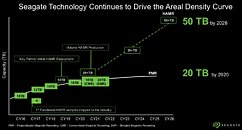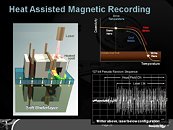
Fujifilm and IBM Develop 50 TB Native Tape Storage System, Featuring World's Highest Data Storage Tape Capacity
FUJIFILM Corporation (President and CEO, Representative Director: Teiichi Goto) and IBM today announced the development of a 50 TB native tape storage system, featuring the world's highest native data tape cartridge capacity. Fujifilm has commenced production of a high-density tape cartridge for use with IBM's newest enterprise tape drive, the TS1170. The sixth-generation IBM 3592 JF tape cartridge incorporates a newly developed technology featuring fine hybrid magnetic particles to enable higher data storage capacity.
Innovations in achieving 50 TB Native Capacity
Fujifilm has succeeded in achieving this innovative cartridge capacity by evolving the technologies developed in previous tape generations. This involved enhancing both the areal recording density (the amount of data that can be recorded per square inch) and the overall recording area (the surface area capable of recording data).
Innovations in achieving 50 TB Native Capacity
Fujifilm has succeeded in achieving this innovative cartridge capacity by evolving the technologies developed in previous tape generations. This involved enhancing both the areal recording density (the amount of data that can be recorded per square inch) and the overall recording area (the surface area capable of recording data).









